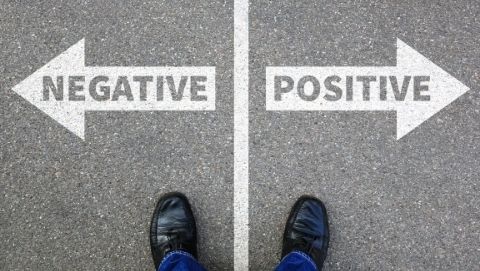Turning Those Negative Thoughts Around
By Melanie Dabb, Extension Assistant Professor

A lot of what we feel starts with how we think. Often when we experience an emotion, it starts with something we were thinking which happened because of how we interpret an experience. According to the American Psychological Association, automatic thoughts are instantaneous, nonconscious and something we do out of habit. If these automatic thoughts are negative it leads to feelings of depression, discouragement and even anger.
Becoming aware of these thoughts and actively restructuring them can go a long way to feeling a sense of contentment and peace in daily life. In the book The Confidence Code: The Science and Art of Self-Assurance---What Women Should Know by Katty Kay and Clair Shipman (2014), the authors describe keeping a notebook on hand and for a few days writing down any negative automatic thoughts they had. They then looked at this list and rewrote the negative thought to a neutral or a positive. For example, a negative automatic thought may be “that comment sounded so stupid, why don’t I just keep my mouth shut during staff meeting?” One way to reword this thought is to say, “It took a lot of guts to put my opinion out there for everyone to hear.” The replacement thought doesn’t necessarily have to prove the negative thought wrong or be exactly opposite, it just needs to change the interpretation of the situation in a way that isn’t negative.
There is also power in physically writing down these negative automatic thoughts and the positive rework. In a 2013 study, participants wrote down what they either liked or disliked about their bodies. The first group ripped those thoughts up and discarded them while the second group kept their lists in their pockets. The study found that those who threw away their list were much less likely to ruminate or give much weight to the items on their list, while the group who kept their list internalized the thoughts and were more likely to think on them over and over. The researchers also looked at whether or not this activity had to be done physically or if it could simply be done as a mental exercise and they found that the results are much higher when participants physically wrote down their thoughts and threw them away. The moral of this story is, after you have become aware of your negative thoughts and have rewritten them, get rid of the notebook where you wrote them down. By taking the time to practice reframing negative thoughts and interpreting situations in a more neutral or positive way, we will be setting ourselves up for success in reaching goals and feeling more peace and happiness.
References
- APA Dictionary of Psychology. (2020). APA Dictionary of Psychology. https://dictionary.apa.org/automatic-thoughts
- Briñol, Pablo & Gascó Rivas, Margarita & Petty, Richard & Horcajo, Javier. (2012). Treating Thoughts as Material Objects Can Increase or Decrease Their Impact on Evaluation. Psychological science. 24. 10.1177/0956797612449176.
- Kay, K., & Shipman, C. (2018). The Confidence Code: The Science and Art of Self-Assurance---What Women Should Know (Reprint ed.). Harper Business.


 Utah 4-H & Youth
Utah 4-H & Youth